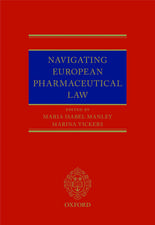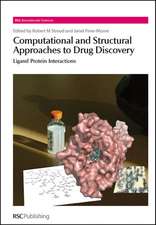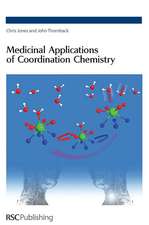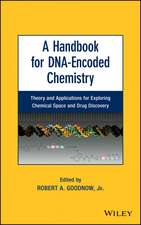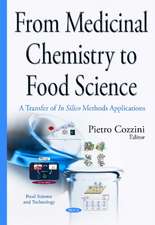Computational Approaches to Nuclear Receptors: RSC Drug Discovery, cartea 30
Editat de Pietro Cozzini, Glen E Kelloggen Limba Engleză Hardback – noi 2012
Nuclear receptors (NR) are ligand-induced activated transcription factors that are involved in numerous biological processes. Since the 1990's when the first structures were determined by means of X ray diffraction, the number of NR structures has increased considerably. Moreover several "omics" projects (genomics, pharmcogenomics and proteomics) have opened up great opportunities for the discovery of new targets, the characterization of abnormal protein patterns, the selection of "tailored" drugs and the evaluation of drug efficacy even with a lack of structural data. Furthermore, structure-based drug design, computational methods for in silico screening and nanobiotechnology- based tools are simplifying this time-consuming and money-intensive research of lead compounds and, possibly, new drugs. Biological interactions such as those that occur between a protein and ligand are concerted events where flexible molecules interact. Thus understanding flexibility of large molecules or biological complexes is of primary importance to help define the right model to approximate the reality for drug discovery, virtual screening, food safety analysis, etc. NRs are known as flexible targets, with many structural similarities, in particular for their Ligand Binding Domain: these similarities could be assumed to share behavioural qualities that belong to this class of compounds. Thus to supply a possible, complete and exhaustive answer to questions about the behaviour of NRs, their interactions with new potential drugs, endocrine disruptors such as animal and human food toxins, food additives or industry residuals, it is mandatory to approach the problem from a different point of view: a molecular modelling approach, steered synthesis, and in vitro and in vivo tests, etc. The aim of this book is to provide a state of the art review on investigations into Nuclear Receptors.
Din seria RSC Drug Discovery
- 14%
 Preț: 1227.21 lei
Preț: 1227.21 lei - 27%
 Preț: 2320.97 lei
Preț: 2320.97 lei - 5%
 Preț: 1548.26 lei
Preț: 1548.26 lei - 5%
 Preț: 1146.35 lei
Preț: 1146.35 lei - 5%
 Preț: 1137.19 lei
Preț: 1137.19 lei - 14%
 Preț: 1028.99 lei
Preț: 1028.99 lei - 5%
 Preț: 1139.05 lei
Preț: 1139.05 lei - 14%
 Preț: 1080.91 lei
Preț: 1080.91 lei - 14%
 Preț: 1195.25 lei
Preț: 1195.25 lei - 14%
 Preț: 1137.86 lei
Preț: 1137.86 lei - 5%
 Preț: 1372.96 lei
Preț: 1372.96 lei - 14%
 Preț: 1247.24 lei
Preț: 1247.24 lei - 9%
 Preț: 1067.06 lei
Preț: 1067.06 lei - 14%
 Preț: 1163.73 lei
Preț: 1163.73 lei - 14%
 Preț: 1247.53 lei
Preț: 1247.53 lei - 5%
 Preț: 1554.98 lei
Preț: 1554.98 lei - 14%
 Preț: 1359.11 lei
Preț: 1359.11 lei - 5%
 Preț: 1529.80 lei
Preț: 1529.80 lei - 14%
 Preț: 1381.56 lei
Preț: 1381.56 lei - 5%
 Preț: 1440.92 lei
Preț: 1440.92 lei - 5%
 Preț: 1138.48 lei
Preț: 1138.48 lei - 5%
 Preț: 1535.29 lei
Preț: 1535.29 lei - 14%
 Preț: 1383.21 lei
Preț: 1383.21 lei - 14%
 Preț: 1389.84 lei
Preț: 1389.84 lei - 14%
 Preț: 1321.37 lei
Preț: 1321.37 lei - 5%
 Preț: 1497.68 lei
Preț: 1497.68 lei - 14%
 Preț: 1033.62 lei
Preț: 1033.62 lei - 14%
 Preț: 1134.26 lei
Preț: 1134.26 lei - 5%
 Preț: 1240.14 lei
Preț: 1240.14 lei - 5%
 Preț: 1239.41 lei
Preț: 1239.41 lei - 14%
 Preț: 947.56 lei
Preț: 947.56 lei - 14%
 Preț: 777.54 lei
Preț: 777.54 lei - 14%
 Preț: 1136.40 lei
Preț: 1136.40 lei - 14%
 Preț: 1241.40 lei
Preț: 1241.40 lei - 5%
 Preț: 1499.54 lei
Preț: 1499.54 lei - 5%
 Preț: 886.60 lei
Preț: 886.60 lei - 5%
 Preț: 964.67 lei
Preț: 964.67 lei - 5%
 Preț: 1052.39 lei
Preț: 1052.39 lei - 9%
 Preț: 1006.30 lei
Preț: 1006.30 lei - 9%
 Preț: 1068.32 lei
Preț: 1068.32 lei - 9%
 Preț: 764.05 lei
Preț: 764.05 lei - 9%
 Preț: 1110.77 lei
Preț: 1110.77 lei - 5%
 Preț: 1160.16 lei
Preț: 1160.16 lei - 5%
 Preț: 1157.56 lei
Preț: 1157.56 lei - 5%
 Preț: 1158.06 lei
Preț: 1158.06 lei - 5%
 Preț: 1157.11 lei
Preț: 1157.11 lei - 9%
 Preț: 1211.71 lei
Preț: 1211.71 lei - 5%
 Preț: 1120.12 lei
Preț: 1120.12 lei
Preț: 1040.85 lei
Preț vechi: 1210.29 lei
-14% Nou
Puncte Express: 1561
Preț estimativ în valută:
199.16€ • 207.94$ • 164.84£
199.16€ • 207.94$ • 164.84£
Carte disponibilă
Livrare economică 15-29 martie
Preluare comenzi: 021 569.72.76
Specificații
ISBN-13: 9781849733649
ISBN-10: 1849733643
Pagini: 176
Dimensiuni: 161 x 238 x 18 mm
Greutate: 0.46 kg
Editura: Royal Society Of Chemistry
Seria RSC Drug Discovery
ISBN-10: 1849733643
Pagini: 176
Dimensiuni: 161 x 238 x 18 mm
Greutate: 0.46 kg
Editura: Royal Society Of Chemistry
Seria RSC Drug Discovery
Cuprins
Preface; Introduction; Nuclear receptors: connecting human health to the environment; Structural aspects, pros and cons of structural data as a base for computational investigations; Protein Structure Prediction and Analysis with Constraint Logic Programming; Molecular Dynamics: A Tool to Understand Nuclear Receptors; Docking, screening and selectivity prediction for small molecule nuclear receptor modulators; Quantum chemical studies of estrogenic toxins; Fluorescent rats to test computational studies; Homology modeling studies of a Nuclear G-protein Coupled Receptor GPER; From computational simulations on NR to chemosensors for food safety.
Notă biografică
Professor Cozzini's main research interests have been the development of chemistry software and Database Design and the study of non covalent interactions in large organic host-guest complexes such as mono and bis-calixarenes, cyclodestrins and phorphirins, using different computational techniques. He is involved in the study of in silico molecular association using different molecular modelling approaches. In particular, he developed, together with Profs. Abraham, Kellogg and Mozzarelli, a new methodology based on a non Newtonian force field (HINT), to study biomolecular association, including the evaluation of the water role and the protonation state of the models. He has collaborations with Profs. D. Abraham and G. Kellogg, Institute for Structural Biology and Drug Discovery, Virginia Commonwealth (VA), Prof. A. Olson, Molecular Graphics Laboratory, The Scripps Research Institute, La Jolla (CA), Prof. S. Guccione, Department of Pharmaceutical Sciences, University of Catania, and with colleagues at University of Parma. Glen E. Kellogg is an Associate Professor in the Department of Medicinal Chemistry at Virginia Commonwealth University, USA.
Textul de pe ultima copertă
Nuclear Receptors (NRs) are ligand-induced activated transcription factors that are involved in numerous biological processes. Since the 90's when the first structures were determined by means of X-ray diffraction, the number has increased considerably. Moreover several "omics" projects have opened up great opportunities for the discovery of new targets, the characterization of abnormal protein patterns, the selection of "tailored" drugs and the evaluation of drug efficacy even with a lack of structural data. Furthermore, structure-based drug design, computational methods for in silico screening and nanobiotechnology-based tools are simplifying this time-consuming and expensive research of identifying lead compounds and, possibly new drugs. Biological interactions such as those that occur between a protein and ligand are concerted events where flexible molecules interact. Understanding the flexibility of large molecules or biological complexes is of primary importance to help define the right model to approximate the reality for drug discovery, virtual screening and food safety analysis. NRs are known as flexible targets, with many structural similarities, in particular for their Ligand Binding Domain. To understand the behaviour of NRs, it is mandatory to approach the subject from a different perspective. The aim of this book is to provide a state-of- the-art review on investigations into Nuclear Receptors. The contents provide an introduction to their structure and function, a critical overview of experimental structural data as a base for modeling, development of theoretical approaches to modeling and computational studies to predict interactions with small ligands, in vitro and in vivo experiments to validate computational simulations, experimental applications, and as targets for endocrine disruptor screening.
Descriere
The aim of this book is to provide a state of the art review on investigations into Nuclear Receptors.

